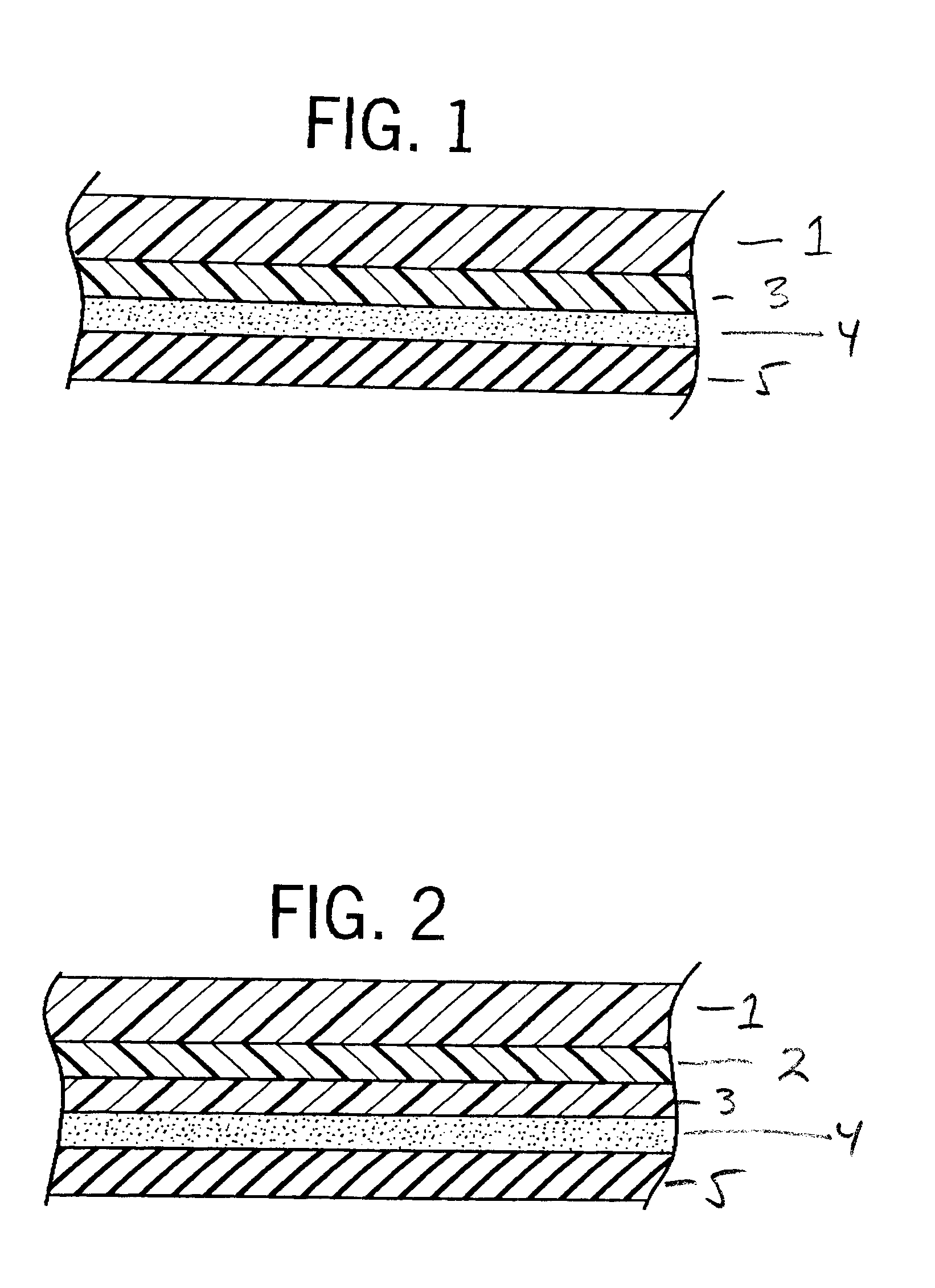Label for use on rubber products
a technology for labels and rubber products, applied in the direction of identification means, instruments, applications, etc., can solve the problems of peel adhesion of labels to products, and achieve the effect of preventing peel adhesion
- Summary
- Abstract
- Description
- Claims
- Application Information
AI Technical Summary
Problems solved by technology
Method used
Image
Examples
examples 1-6
Procedure
Six examples were performed to evaluate the contribution of a separate chlororesorcinol layer to the adhesiveness of a tracking label to a rubber substrate.
examples 1-3
were controls that contained only one primer layer, and that layer was composed of a blend of chlororesorcinol and resorcinol-formaldehyde latex solution (CRFL). The label had a configuration of FIG. 1 in which the film substrate was a single layer of 4 mil PET commercially available under the trademark Toyobo GS-2311. The CRFL layer (No. 3 in FIG. 1) was compounded from the following ingredients:
Deionized Water 32.4 g
50% NaOH Soln.sup.1 0.4 g
Penacolite R2170.sup.2 3.33 g
Hexamethylene tetramine 0.576 g
Gentac 118 (SB-VP Latex).sup.3 31.7 g
Denabond.sup.4 30.0 g
.sup.1 0.005 mol of NaOH, or 0.27 mol % based on the weight of water.
.sup.2 Partially precondensed resorcinol-formaldehyde resin (75% in water) manufactured by Inspec Corporation.
.sup.3 Styrene-butadiene vinyl pyridine latex solution manufactured by Omnova Solutions, Inc.
.sup.4 Chlororesorcinol available from Nagase Chemical.
This CRFL solution was then cast onto the surface of the polyester film using a No. 7 wire wound rod to p...
examples 4-6
report embodiments of this invention. In these examples, the CR layer was prepared from a 5% solution of chlororesorcinol made by mixing 25 g of Denabond with 65 g of deionized water and 10 g of isopropyl alcohol. This dilute solution was coated onto a 4 mil polyester face sheet using a No. 7 wire wound rod to produce a layer thickness (No. 2 in FIG. 2) of 0.04 mil.
For Control Examples 1-3, the CRFL layer was cured for 5 minutes at 177, 191 and 205 C., respectively. The adhesive was then dried for 5 minutes at 150 C. in each of these Examples.
For Examples 4-6, the CR layer was cured for 5 minutes at 177, 191 and 205 C., respectively, but in these examples, the CRFL layer and the adhesive layer were each dried at 150 C. for 5 minutes.
Finished labels were adhered to a 7.5.times.7.5.times.0.65 centimeter (cm) pieces of uncured sidewall tire compound. The samples were pressed between two sheets of release liner for 10 minutes at 177.degree. C. under 1 ton of pressure on a 12.7 cm hydrau...
PUM
| Property | Measurement | Unit |
|---|---|---|
| thickness | aaaaa | aaaaa |
| thickness | aaaaa | aaaaa |
| thickness | aaaaa | aaaaa |
Abstract
Description
Claims
Application Information
 Login to View More
Login to View More - R&D
- Intellectual Property
- Life Sciences
- Materials
- Tech Scout
- Unparalleled Data Quality
- Higher Quality Content
- 60% Fewer Hallucinations
Browse by: Latest US Patents, China's latest patents, Technical Efficacy Thesaurus, Application Domain, Technology Topic, Popular Technical Reports.
© 2025 PatSnap. All rights reserved.Legal|Privacy policy|Modern Slavery Act Transparency Statement|Sitemap|About US| Contact US: help@patsnap.com


